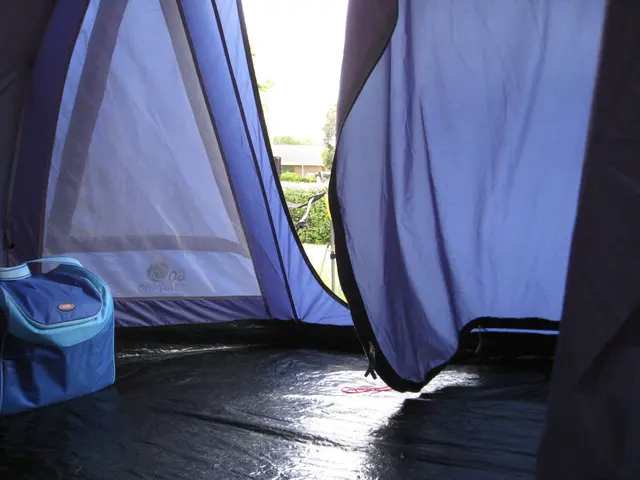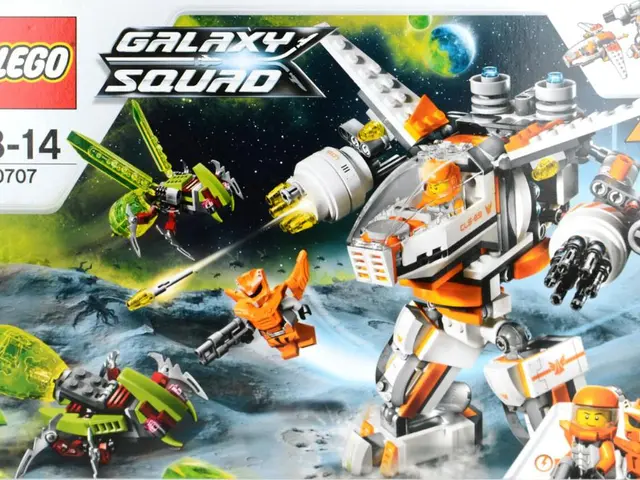Training Techniques for Managing Reactive Canines from a Behavioral Expert
In the world of pet care, Rachel Rodgers stands out as a beacon of expertise and compassion. As the Head of Training and Behavior at Napo Pet Insurance, Rodgers is dedicated to helping pets and their parents build positive, lasting bonds. Her latest recommendations for reactive dog training are a must-read for any pet owner dealing with a reactive dog.
A Y-shaped harness with a front D-ring is essential for reactivity training. This type of harness allows full shoulder movement and helps reduce the risk of injury. The front D-ring is especially useful for attaching a double-ended leash to gently guide the dog away from triggers, providing greater control. Rachel specifically recommends the Ruffwear Web Master Harness, noted for its foam padding, reflective strips, Y-shaped front, D-ring clip, and adjustable straps for comfort and safety during training.
Successful reactivity training is about changing how the dog feels, not just modifying behavior. With this in mind, Rachel emphasizes the importance of using equipment that does not add negative associations to the presence of triggers. Tools such as head halters or figure-of-eight leashes, which could tighten or cause discomfort to a dog, should be avoided during reactivity training.
A double-ended leash offers extra control, makes it easier to redirect the dog's movement, and lets you adjust the length or attach it to two points on the harness. The front attachment on a double-ended leash acts as a pivot point, making it easier to turn the dog away from distractions or triggers if needed.
High-value training treats are helpful in reactivity training, as they can be used to build positive associations with triggers and change the dog's emotional response over time. The Squeezable Dog Treat Pouch is a convenient option for dispensing treats quickly on the go. Look for a treat pouch with a waterproof, washable lining for ease of use and cleanliness.
Reactive dogs overreact to certain stimuli in their environment, often due to anxiety, fear, lack of socialization or training, insecurity, or trauma. The Halti Training Leash is a multi-functional leash that can be used in seven different ways, including for recall, heel training, and hands-free use.
Lastly, it's important to consider the environment in which training takes place. Using equipment that could worsen reactivity by adding negative associations to the presence of triggers should be avoided. For instance, Adios Compostable Dog Poop Bags are a more eco-friendly option, but their strong smell could potentially trigger a reactive dog.
Rachel Rodgers, an accredited clinical animal behaviorist, has been recognized for her contributions to the industry. This article was last updated in July 2025 by Megan Milstead.
- In the realm of reactivity training, Rachel Rodgers recommends using a Y-shaped harness like the Ruffwear Web Master Harness for its comfortable and safe design.
- Changing a dog's emotions during reactivity training is crucial, and Rachel advises against using tools that could add negative associations with triggers, such as head halters or figure-of-eight leashes.
- A double-ended leash can offer better control, ease movement redirection, and provide a pivot point to turn the dog away from distractions or triggers during training.
- High-value training treats are beneficial for building positive associations with triggers and changing a dog's emotional response in reactive training. The Squeezable Dog Treat Pouch is a handy choice for easy and quick treat dispensing.
- Reactive dogs are often anxious, fearful, or lacking in socialization, training, security, or trauma-free experiences. The Halti Training Leash can be used in various ways, including recall, heel training, and hands-free use.
- To avoid worsening reactivity during training, it's essential to avoid equipment that could add negative associations with triggers. For example, the strong smell of Adios Compostable Dog Poop Bags might potentially trigger a reactive dog.








